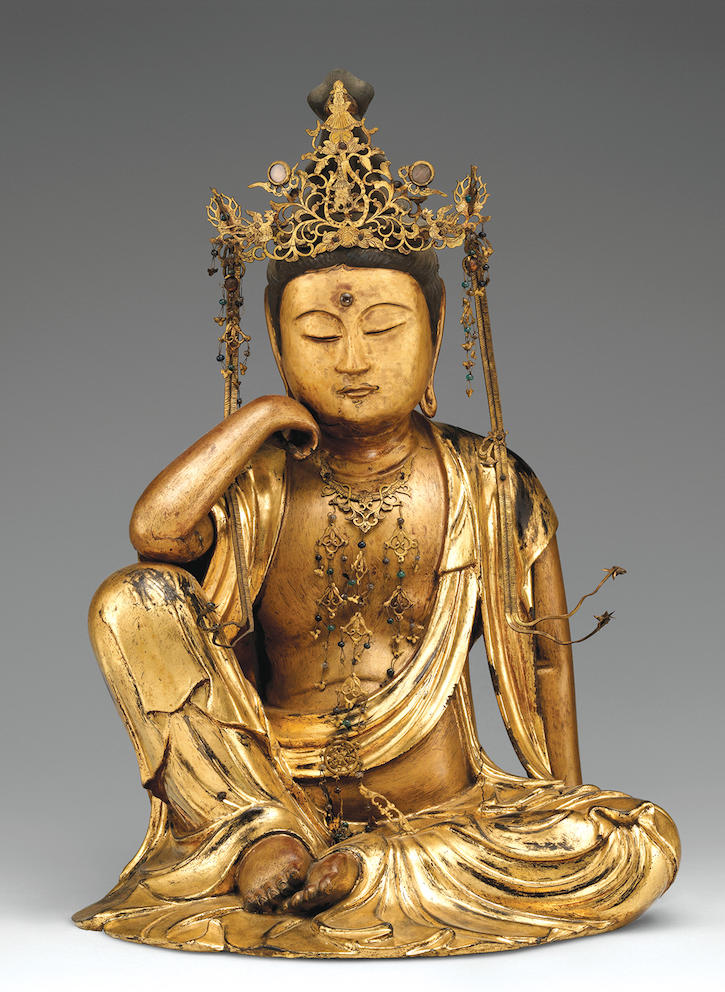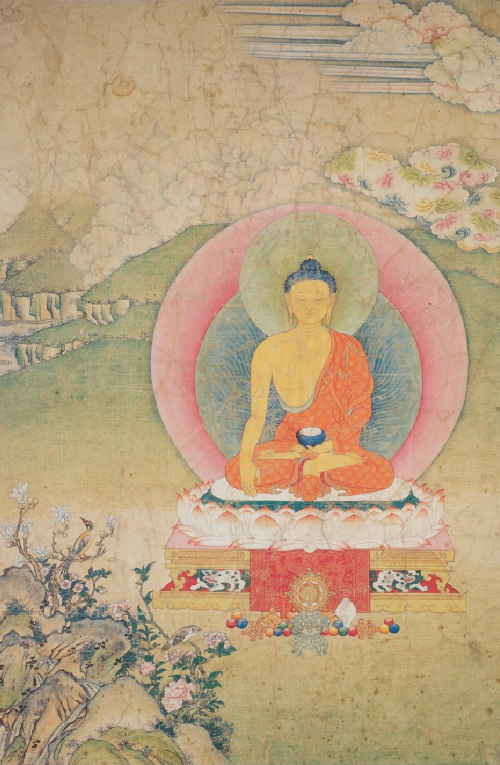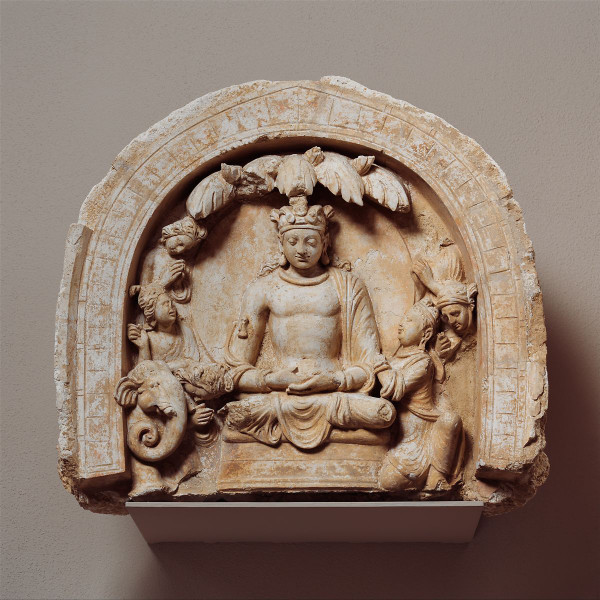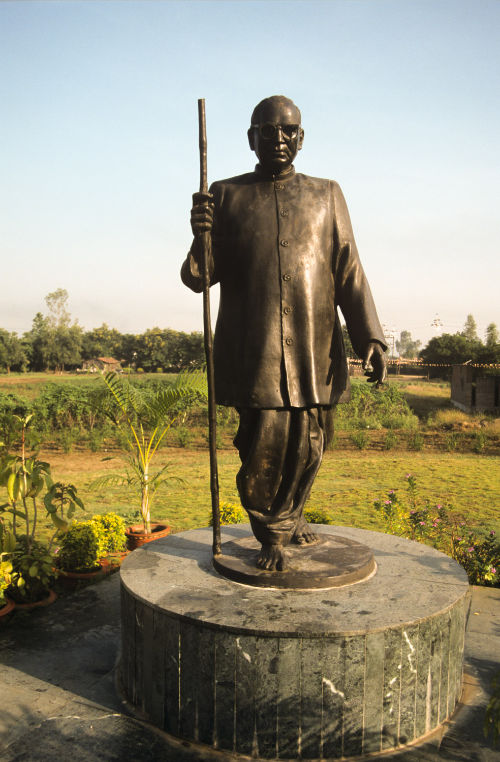Running a Triratna Centre
Useful information for Centre teams,
managers, directors & Chairs
We would love for this to be your bookmarked ‘go-to’ place for all that essential information we sometimes need. Please be patient with us – perfection is not an option!
We’ll mark information that is specific to a particular country, and would appreciate you sending us information that suits your situation so we can share it.
Get in touch if you spot something that could be better:

Sustain yourselves to keep inspired
We all have sources of inspiration that particularly speak to us, but perhaps some of what’s here will sometimes help.
Cultivate connection with other 'leaders' and your President
Running a group or Centre is not always easy and it’s vital that you are plugged in to a network of others with similar situations. There are regular gatherings and some online meetings for group leaders and for Chairs – get in touch with the ECA Development Team for details (info@triratnadevelopment.org)
(Order only) Here is some information about Presidents: any questions please contact the Presidents Exec via triratna.presidents@gmail.com
Attend events with others doing similar work
For Centre Chairs in Europe, there are 2 week-long gatherings, one in January and one in the summer. They are primarily a context for friendship, support, sharing of ideas, as well as discussing issues and what is needed going forwards. It is called the ECA (European Chairs Assembly) and is one of Triratna’s longest-standing and effective bodies.
For group leaders in Europe, there are also two gatherings each year as well as regular online meetings. Again, we are there to help each other in whatever way we can.
Contact the Development Team for more information: info@triratnadevelopment.org
Also highly recommended is the International Chairs Course run by Jnanadhara
Do you need a retreat?
Bhante encouraged a healthy balance of ‘outward’ Bodhisattva work and ‘inward’ Bodhisattva work, including the suggestion that every Order Member has a one month solitary retreat every year.
Again, you will have your own preferences, but it’s always worth checking out goingonretreat.com if you’re wondering what’s available.
Know thyself
Some questions:
- do you thrive with significant time alone?
- or through dialogue with others?
- are you able to get the right balance of these?
- what are the signs that you are not functioning at your best? if so, do you know what is needed?
- if you are in a leadership position, where are you on the spectrum between ‘tight grip’/control and easy-going/empowering others?
- what are your common hindrances in life, and thus at work?

Building Sangha
What is a Triratna Centre?
Centres provide a context both for the population to discover the Dharma (to whatever extent they wish) as well as for existing practitioners to meet and practice together. So there is an outward-looking reach as well as a wish to facilitate ever-deepening of each individual’s Going For Refuge.
Both are vital: depth and breadth – neither a closed social circle of friends nor simply an adult education service.
So building Sangha ranges from satisfying our most committed to what has been called ‘soft Sangha’ consisting of those whose involvement is occasional, perhaps more superficial, but still important to them.
More principially, it is vital for Triratna’s continued existence and future flourishing that your Centre is in harmony with some defining values and understanding. Please read this important document: What is a Triratna Centre?
How do you know it's going OK? Stages of growth
Vision and Delivery
The London Buddhist Centre has developed a simple two-page summary of its core functions and who’s responsible for delivering them.
Facilitating Strategy and Vision
Amaraketu, who was chair of the Bristol Buddhist Centre, has provided this guide to developing a successful strategy and vision in your council and/or sangha. A summary is also available as a powerpoint presentation. This has lots of pretty pictures and interesting visuals that are not in the pdf!
Also see video from Subhadassi’s workshop on ‘how to create a compelling vision for your Centre‘
Stages of Growth
A document describing 11 stages of growth, from Buddhist group to clustered big Centre – where is your Centre in this, do you think?
Pathways
How does someone coming through the door of your Centre progress to becoming an Order Member? Viryanaga (a Centre consultant) has offered an exploration of people’s deepening involvement – resources to follow.
Making someone a Mitra
There may be a printed version of this available (currently out of print) but this is it as a pdf:
Team, roles, job descriptions, decision-making
Roles
- Guidance on appointing Chairs
- What is a Centre Chair?
- 15 points for Centre Chairs
- sample job description for Chair
- annual reviews for Chairs
- a model of leadership
- contact info@triratnadevelopment.org for ECA Handbook (European Chairs Assembly)
- Sample Centre director/manager job descriptions
- Example Centre team roles, responsibilities at LBC
A little on decision-making
- International Chairs Course has a lot of good information/advice on consensus decision-making
- decision-making by consensus – Dhammarati
- consensus diagram – Dhammarati
- Decision making – notes from a talk by Vajragupta at the ECA Jan 2014
- Ideas on Consensus as Practice in Council Meetings 2013
Volunteers
Help from the Sangha, even relative newcomers, is always needed both by you and them! Many people want to help and thrive on taking responsibility – especially true for young people. Give them something to do!
Enthusiasm dwindles, circumstances change – volunteers are rarely consistent for long periods, so there is work in ‘managing’ them, keeping the numbers sufficient for your needs.
Even the most self-effacing individual appreciates being appreciated from time to time, so don’t hold back! Show them that it matters and that you value their contribution.
Some Centres hold regular volunteer events where they do some practice together, socialise and have some treats. Have a think about what sort of event your volunteers might enjoy.
As already stated, volunteers are not usually a true refuge! ie they cannot be relied upon indefinitely. In the light of that, what sort of responsibilities can they take? It’s probably wise not to rely on them to take care of your entire financial set-up.
(and one that Ipswich put together)
Giving Avalokitesvara a Hand by Dhammaloka:
An exploration in imagination and Sangha-building. Taking images of the 42 ‘major’ hands or emblems of Avalokitesvara/Kuan Yin participants explore both the great variety of Bodhisattva activity and how they might themselves contribute to it.
Possible objectives:
- Exploring the variety of enlightened activities
- Introducing GuanYin / Avalokitesvara
- Sangha-building, getting to know each others’ personal interests and strengths
- Playful exploration and gaining of commitment to contribute to the mandala
- Contextualize Avalokitesvara / GuanYin in the White Lotus Sutra
- Introduce Avalokitesvara as a symbol of the Order
Avalokitesvara 42 hands diagram and instruction
TEACHERS
In Triratna, we don’t generally pay teachers at our Centres, although it may be part of a broader role. So teaching is another aspect of volunteering. Please consider this guidance when deciding who teaches at your Centre.
Online Sangha
Essentials of Sangha online – 6 videos from Prajnaketu:
- How to get my Sangha online?
- How to run successful Sangha events on Zoom
- Unlock the hidden treasures of Zoom
- Avoiding the Pitfalls of Online Puja
- Dynamic Dharma Discussion in Zoom
- Making the most of Online Dharma
Here’s the playlist of all videos.
Accessibility. People are different! Not everyone is equally able to participate in Zoom (and similar) and have particular needs:
How to make your online meetings accessible
Fairly detailed ‘how to’ use Zoom
More advanced/detailed info on hybrid classes
If doing international events (involving those for whom English is not their first language), here’s some top tips:
Programming (festival dates, Triratna calendar etc)
Fixed date festivals (solar calendar)
Parinirvana Day 15 February
Triratna Sangha Day 6 April (founding of the FWBO in 1967)
Triratna Order Day 7 April (founding of the WBO in 1968)
The Buddha’s birthday 8 April
Sangharakshita’s birthday 26 August (b. 1925)
Sangharakshita’s death 30 October (2018)
| CE Year | Buddha | Dharma | Padmasambhava | Sangha |
| 2025 | 12 May | 10 July | 30 Sept | 5 Nov |
| 2026 | 1 May | 29 July | 21 Sept | 24 Nov |
| 2027 | 20 May | 18 July | 9 Oct | 14 Nov |
| 2028 | 8 May | 6 July | 28 Sept | 2 Nov |
| 2029 | 27 May | 25 July | 18 Sept | 21 Nov |
| 2030 | 17 May | 15 July | 6 Oct | 10 Nov |
| 2031 | 7 May | 4 July | 26 Sept | 28 Nov |
| 2032 | 25 May | 22 July | 14 Sept | 17 Nov |
| 2033 | 14 May | 12 July | 2 Oct | 6 Nov |
The lunar calendar festivals are calculated according to the first full moon (in the UK) of May, July, and November. Padmasambhava Day is calculated according to the tenth day of the lunar month starting in September. CE years are given as there is no general agreement between the different traditions on the counting of Buddhist years, but in 1957 the 2500th Buddha Jayanti was celebrated internationally and we therefore calculate the Buddhist year by adding 543 to the CE year. There may be some variation from (and between) Indian, Burmese, Sri Lankan, and Tibetan (etc) festival dates, because their calendars vary so Bhante decided that we should always simply choose the first full moon of the relevant (western) month.
TRIRATNA CALENDARS
If you use Google calendar you can add various Triratna calendars which may be useful when planning your programme. The most useful one is Triratna Meetings, which is populated by staff from the Order Office (for Order events), the ECA (for Chairs meetings) and the College.
To add this calendar, look down towards the bottom of the left-hand side of your Google calendar, and there is a + sign to add more calendars. It gives various options but easiest to choose ‘From URL’ and then paste in this:
You can choose a colour for the events and choose whether to display it or not by ticking/unticking it from the list of your other calendars.
You can also use this planner which you may find more useful
RUNNING A WEEKEND RETREAT
You may find some of this useful
HOME RETREATS
If your team is small or over-stretched, consider joining or even co-creating an online Home Retreat on TBCO for your Sangha
Courses and Dharma resources
As well as the courses offered by Sikkha, you could get ideas from the Dharma resources page.
If you have developed courses that you’d like to share with others, get in touch.
For guidance on introducing Tonglen, here’s a document from Vessantara and Vijayamala
Starting a Community
Starting A Community (UK, 2010)
Here are resources for anyone in the Triratna Buddhist Community thinking to start a residential community, or already living in one. It includes practical advice, inspirational material and Dharma resources; also ideas that may help in times of difficulty. It’s a collaborative effort between members of the Triratna Development team, and people from Triratna’s Young Buddhists Sangha.
Tenancy agreement
The LBC uses an Assured Shorthold Tenancy agreement for those living in its communities; you can download a blank version of it here.
Community Budgets
A spreadsheet for developing a Budget for your community is also attached. It can be used to create a budget and do your bookkeeping. Probably best to take a copy of it and enter your figures and generally adjust it to reflect your situation.
Ethos Statement
The LBC has developed an ‘Ethos Statement’ for its communities. Other working papers connected with managing communities have been developed by the LBC, which may be available on request – please contact the LBC (contact@lbc.org.uk) if you are interested. These include an overview of community financing, a schedule of responsibility for various maintenance expenses, etc.
Blank Tenancy Agreement
Community accounts and budget – blank spreadsheet (pdf)
Community accounts and budget – blank spreadsheet (excel)
Communities ethos statement
Triratna resource pack starting a community (pdf)
Triratna resource pack starting a community (booklet version)
Team Based Right Livelihood
Right Livelihood Resources
Here you will find a wealth of material on Right Livelihood as practiced in Triratna.
It contains both canonical and contemporary material.
- Quotes on Right Livelihood: Extracts from Bhante’s aphorisms, lectures, seminars and written material
- Bhante in Seminar with Windhorse Authority and the Individual
- Bhante in Seminar 153 Q&A at Windhorse Trading
- Bhante seminar excerpts on Sigalovada Sutta
- Bhante talk 051 Noble Eightfold Path Right Livelihood
- Bhante talk 138 authority and the individual in the new society
- Bhante talk Sigalovada Sutta
- Dhammaloka – ethical virtues in business
- Dhammaloka – introduction to right livelihood
- Jnanavaca Introduction to Right Livelihood. Including an exploration of Subhuti’s five categories for Right Livelihood
- Ratnaprabha: A compilation of traditional material on Right Livelihood Ratnaprabha, 2007 (12 pages)
- Ratnaprabha: The five aspects of R L – Non-harming; Appropriate happiness; Growth and Awareness; Simplicity; and Service
- Ratnaprabha: The five aspects of R L – Non-harming; Appropriate happiness; Growth and Awareness; Simplicity; and Service-handout
- Ratnaprabha notes on Communication and Kindly Speech
- Ratnaprabha – themes for RLH meetings:Very useful set of suggestions for themes to explore in Right Livelihood meetings
- Saddharaja and Ratnaprabha, draft version, Sept 2006 Ethos & R L course outline
- Saddharaja work as spir practice: A major (though still draft) study of the principles of R L as practiced within W:E
- TBRL 12-page mind-map created by Paul Powell of the Karuna Trust. Print it out, stick it together, and pin it on your wall!
- Vajradarshini notes for 8 short talks on Dogen’s ‘Tenzo Kyokun’,(13 pages)
- W:E ethos statement: based on 5 principles or values – generosity, ethics, personal development, collectivity and communality
- Ratnaghosha July 2008 spir practice, productivity and efficiency
Notes from talks given by Saddharaja, sharing his wealth of experience from years working at Windhorse:Evolution
- buddhist right livelihood booklet
- talk 1 meaningful work and values
- talk 2 dealing with change
- talk 3 work-life well-being
- talk 4 work-place politics and creativity
- talk 5 right craftsmanship and the god of technology
- talk 6 right realism money and the game of life
- team-based right livelihood and virya
Handouts from Saddharaja’s Teambased Right Livelihood book, created during and for his work at Windhorse:Evolution [google doc to copy] [pdf-version]

Finances
A financially robust, sustainable and even prosperous Centre or group is a very good thing! There is help though…
Advice and tips gathered over the years
- Financial Literacy – basic financial jargon and concepts (beware there is a link that doesn’t work, sorry)
- Rates relief for UK Centres
- Gift Aid Small Donation Scheme & video
- example of a successful phone appeal (from Future Dharma 2023)
- Communications & Fundraising (from Future Dharma, Oct 2022)
- Resource list: Pro-bono and low-cost sources of support for smaller charities (from Association of Chairs)
- Free Gifts In Wills Service
Some of these top tips may be out of date now – suggestions as always to info@triratnadevelopment.org
- what is fundraising?
- intro to fundraising – Samayasri
- dana economies – Siddhisambhava
- gift aid – payroll giving 2007
- gift aid – payroll giving update 2012
- internet fundraising 2009
- internet fundraising – some learning points 2008
- JustGiving suggestions by Lokabandhu 2008
- legacy fundraising – an intro
- making the case to inspire generosity
- tips for fundraising in a recession
The above video is offered with this handout/summary

Vajraketu and Jyotipala working in a Team Based Right Livelihood project in London. 1981 : © Copyright Urgyen Sangharakshita Trust (see Triratna Picture Library)
Marketing
To put it another way, how to entice people to your classes!
Your website
Very important!
For an almost free website, see Dhammakumara’s offer here
Some useful articles:
- web literacy for Chairs
- web friendly text
- findability and search engine optimisation
- website management
- what are our websites communicating?
Some Three Jewels (and other) logos you can use:
- Triratna logos (zip)
Three Jewels Logo & Triratna Photos
In 2016 Satyadarshin re-prepared the three jewels ‘logo’ that had been in circulation for years. It is available here in various sizes and versions. The logo has been copyrighted by the European Chairs Assembly, it is free for use in any Triratna venture but nowhere else.
- Triratna Logos (zip) – includes the logo for Free Buddhist Audio
- 3 jewels (pdf)
- triratna – white background (jpg)
- triratna – square hiquality blue background (jpg)
- 3 jewels – square hiquality blue background (pdf)
- 3 jewels – no background (jpg)
- 3 jewels – no background (pdf)
- 3 jewels – square hiquality blue background (jpg)
- 3 jewels – square hiquality blue blackground (pdf)
Triratna Picture Library – a fantastic resource of our history
Publicity information
Here you will find a collection of ideas and information relating to publicity. Included is a range of pre-designed posters where you can just fill in your local details on-line, print them out – and hey presto! – there’s your poster! When choosing images, copyright issues are important.
The ‘Triratna Resources Sheet‘ can be used as a simple handout giving links to many of Triratna’s main on-line resources. It includes sections on Meditation, Study, Audio/Visual, About the Triratna Buddhist Community, Retreats in the UK, and Books; it mentions Windhorse, FreeBuddhistAudio, Sangharakshita’s website, Triratna News and many more.
There’s also the excellent sheet ‘10 tips for successful promotional literature’ on how to produce good publicity, produced by the UK’s ‘Directory of Social Change’. And we’ve also included a pack of useful Triratna logos.
Bright Ideas
Listed down below you will find dozens of bright ideas collected from different European Triratna projects. As well as forming a kind of celebration of some of the things that are going well round the movement, you may well find ideas and information for your project too.
They have been collected by the Triratna Development Team and presented to the ECA in batches, most recently in January 2011.
- Open days 3 or 4 times per year on Saturdays. These are often feeders for the next introductory course that starts the week after.
- Leave some places free on intro courses for people who book last minute (if they book at all)!
- Run courses concurrently on different days, and synchronise… make it clear to people they can go on another night if they can’t make their usual night one week
- Saturday morning classes
- Daytime programme providing what people need to get fully involved (eg from drop-in intro classes to mitra study)
- Mindfulness intro courses
- Introduction to Buddhism courses done in a very practical way… i.e. with exercises, short, led reflections, ways to practice in everyday life… Introduce meditation later
- New series: “Buddhism and the Big Questions”
- Incredibly popular urban retreat this year – 326 people took part (60% were newcomers)! “Mindful Moments” – practice tips sent by text message follow-ups after courses. x2/wk for a few months.
- Teach the idea of building Sangha right from the start
- When teaching, also mention determination, energy, confidence, etc whenever encouraging calm, peace, stillness, etc
- In-house training & study for new OM’s who are starting to teach.
- Focus on ‘flow’ (making deepening involvement smooth and easy). Signposting next steps, including Mitrahood.
- Make a clear distinction between well-being and Dharma classes
- Have lots of conversation cafes, hear people’s aspirations, then write out a mission statement for the centre. (They experienced a big increase in standing orders after doing this.)
- Community fanzine?!
- Use of social networking sites, ie Facebook
- Great website – sends out email updates automatically (designed by Upekshapriya).
- Sit down with prospective volunteers & talk about their connection & aspirations. See where they might contribute. (Volunteers all work at same time, then meditate together at lunchtime class.) Culture of dana. Don’t assume it’s EITHER volunteering OR a standing order.
- Young People’s group and the website they’ve produced, meditating in town etc.
- Creating a way into TBRL that was attractive and accessible – i.e. a six month trial… then giving the young women both a lot of support and a lot of autonomy.
- Aikido and meditation classes
- Make a ‘wish-list’ of all the things the centre needs (from tea bags to a new air-conditioning system), then encourage giving a gift (whatever people can afford) to the centre on Sangha Day…
- Retreat Centre lift-shares – see www.freewheelers.com/Buddhafield_Festival
- “Celebrating Generosity” events – celebrate volunteers and donors and give a financial and appeal update
- Mitra Noticeboard
- Be aware what you’re asking people at the class to do. Is it sit still, sit still, & sit still! If so, it may not be great for promoting active engagement, especially for young people.
- Day for partners of Friends/Mitras
- Proposals for new council members to be seconded by existing council members.
- Have only OMs active at the centre as members of the charity.
- Dissolve any sense of there being separate sanghas on different nights of the week by putting effort into connecting up the various groups that use the centre
- Regional chairs meetings
- Photo board of teachers /OMs on council
- People put a sign on the noticeboard: “I’m going on this retreat” inviting others to join
- Always teach Buddhism with meditation – don’t teach meditation on its own / out of a Dharmic context.
- “Celebrating Generosity” events – celebrate volunteers and donors and give a financial and appeal update
- Movement-wide “Going Further” / “Going Deeper” poster
- Design a map of Triratna institutions
Publicity drafts from around Triratna
We’ve also attached a zip file of ideas for publicity at your Centre. Some are a bit unpolished (especially the images), but in terms of attempting to introduce new people to the Dharma, we think that the ideas are strong.
- Triratna posters you can complete (PDF)
- Bright Ideas summary list (PDF)
- 10 tips for successful promotional literature (PDF)
- Publicity Ideas (zip of PDF files)
- Triratna Logo Pack
- Bullet-point guide to designing publicity
- Lighting The Flame Pioneers Issue – Spring 2012 (historic PDF)
- Guide to designing publicity 2011 (PDF)
- Website survey of charges and suggested donations (PDF)
- Including charity and legal details on publicity (PDF)
- Copyright images (PDF)
Publicity - Internet Marketing Strategy
At a Groups & Pioneers weekend at Adhisthana in January 2017, Keith Griggs from the Broxbourne Triratna Group gave a presentation of Internet Marketing strategies – he offered loads of ideas and strategies, as well as questions for those leading Groups to think about. These publicity materials could be very helpful for many of us, whether we lead a Triratna Group or indeed a Buddhist Centre – it should give all of us some ideas to help us promote our local situation more effectively.
What’s included is
- updated powerpoint presentation with 5 extra slides, but otherwise covering the same information that was shown at the weekend at Adhisthana.
- all the slides for this as pdf files
- the wordpress presentation as pdf files
- Keith has created youtube videos of him talking over the slides – very helpful!
He has set these videos to unlisted, so that anyone with the link below can see them, but they do not appear in the Youtube or Google search results.
Internet Marketing for local Triratna Groups
https://youtu.be/ovyYAqzeteM
Quick tour of WordPress for local Triratna Groups
https://youtu.be/EpNZWUYMjIk
Some points on Social Media
Things to remember about Facebook:
- On Facebook you can schedule posts to a Page.
- Only a small percentage of people who like your page on Facebook are likely to see it. If you want to ensure an audience for an important post it’s worth considering spending small amounts of money on ‘boosting’ a post.
- Facebook favours original media rather than links to posts on your own website, so make sure as well as links you also post the odd picture or video, esepcially if you are paying to ‘boost’.
- How to place an advert on Facebook (pdf) – from Shakyapada
Making your materials more accessible
Accessibility is an area many websites, videos etc could improve upon and this is just a few tips, not at all comprehensive or sufficient.
A significant number of people use the internet with no or poor eyesight. They use additional software and settings on their computer to ‘read’ websites but you can make it easier for them, especially for images. This is one website that offers a comprehensive overview of what would make your website more user-friendly for those with disabilities.
Video subtitling is another area that could be improved upon. This is a guide on using sub-titling software, to make it easier for people whose first language isn’t the one in the video, and for those hard of hearing who rely on sub-titles.

LBC winter retreat publicity. 1980s : © Copyright Urgyen Sangharakshita Trust (see Triratna Picture Library)
Legal matters, model policies, employment
Of course this will vary in different places, and bear in mind both that the law changes and that we are not legal experts.
Model Policies
Here is a set of ‘model policies’ for consideration by Triratna Centres. They have been edited from policies used by Windhorse:Evolution, Karuna, the Birmingham and London Buddhist Centres, and others – we’re grateful to them for permission to reproduce them here.
Please note that you will need to check for yourself that the policies suggested here will meet your needs and that they satisfy current legislation.
They have been developed using the recommendations on the Charity Commission website, and ‘tweaked’ to suit the way Triratna Centres typically operate.
There is a good resource in www.bvsc.org which although Birmingham-based contains general information of value nationwide. You can also try vr.volresource.org.uk/org/policieschecklist which also has more policy samples than you would like to think were possible!
Here’s a link to the Charity Commission guidance regarding financial controls
Model Policies:
- Appointing Triratna Buddhist Centre Chairs
- Chair’s responsibilities and criteria
- Complaints procedure and an excellent model policy based on Birmingham’s
- Disciplinary process model policy
- Genuine occupational requirement for Centre Chair
- Triratna sample contract for employment
- Support package and ethos statement in TBRL – model statement
- Financial controls model policy – 2009
- Room booking conditions
- Room booking checklist form
- Room hire checklist
- Sickness Absence Policy (from Birmingham Centre)
- Membership of Triratna Charities draft model policy
- Conflict of interest draft model policy
- Conflict Resolution guidelines (from the International Council)
The list of possible policies is extensive, so choose which ones are appropriate: here are 36 model policies to browse!
- Acting in Absence Policy
- Annual Leave Policy
- Authorisation Level Policy
- Bullying and Harassment Policy
- Compassionate Leave Policy
- Complaints Procedure
- Covid working from home Policy
- Disciplinary and Dismissal Policy
- Dress Code Policy
- Early and Late Working Policy
- Equal Opportunities Policy
- Equipment Policy
- Exit Interview Policy
- Fire Procedure
- Grievance Procedure
- Handover Notes Policy
- Health and Safety Policy
- House Rules
- Induction Policy
- Internet, Email and Social Media Policy
- Job Evaluation Policy
- Leavers’ Procedure
- Maternity, Paternity and Adoption Policy
- Performance Review Procedure
- Recruitment and Selection Policy
- Redundancy Policy
- Shared Parental Leave Policy
- Sickness Policy and Procedure
- Six-month Performance Review Procedure
- Statement of Standards of Behaviour
- Team Briefing Policy
- Time off in lieu Policy
- Trustee Expenses Policy
- Unauthorised Absence Policy
- Volunteer Policy
- Whistle-blower Policy
and finally here’s some policies (as a zip file) from Windhorse:Evolution which was a successful and large business, so these may be more Triratna-friendly/relevant than more generic ones: Windhorse Staff Handbook
Safeguarding
Although it is not a legal requirement in the UK to have safeguarding in place unless one is working with children or vulnerable adults, it is still highly recommended by the Charity Commission. We open ourselves to litigation and reputation loss if we don’t have effective policies and practices to ensure those using our Centres are safe.
More information on safeguarding on this page:
Employers' Responsibilities (UK)
All Triratna employers have a responsibility to ensure proper taxes are paid to their national government.
Various sample/draft employment contracts, policies, and procedures etc. are below.
- General Advice and Where to Find Out More (updated 2019)
This includes information on
- contracts of employment
- Payslips
- Health and Safety
- Recruitment and Selection
- Religious Discrimination
- Health/Disability Issues
- Support and Minimum Wage
- Tax, National Insurance, and Sick Pay
- Other Areas to be Aware of
Of possible use:
- Draft contract for hourly paid staff (needs checking)
- Draft contract for salaried staff (needs checking)
- Draft form/letter for casual worker (needs checking)
- Draft equal opportunities policy
- draft ethos statements: Windhorse & LBC
- Draft job advert for employing Buddhist only
- Proposal to financially support teachers
Fire Safety (UK)
On this website you will find information about regulations.
Communities
There may be exemption from some of the new fire regulations for religious residential communities i.e. less strict regulations apply than would in a strictly commercial property.
We have attached here the UK Government’s “explanatory memorandum” which is also accessible online.
On page 10, paragraph 46 there is the relevant clause which exempts religious communities. I’ve quoted the relevant text below.
Obviously we want our buildings to be as safe as possible, but some of the new regulations are very strict and could involve a lot of expense. So, it is worth investigating what your legal obligations are.
Explanatory memorandum to the management of houses in multiple occupation (england) regulations 2006 no. 372
46. The Act itself exempts certain other HMOs from licensing requirements, namely those owned by the police, fire and rescue and health service bodies, those where the local authority or a registered social landlord has control, and HMOs occupied principally for the purposes of a religious community (except certain blocks of flats that were not converted in accordance with relevant building regulations).
Retreat Centres
When a fire officer visited Padmaloka he was happy to classify it as a residential property (which meant less stringent requirements). He made a few minor recommendations, which Padmaloka were happy to implement. The reason for the re-classification was that Padmaloka is not a hotel or a hostel – they are closer to a monastery because they have a number of people who live there, some of the ‘teachers’ having lived there for quite a number of years. They also don’t charge people a flat cost when they go there – they have a rate they ask for but also are happy to negotiate reductions and also for people to come sometimes for free. Maybe some of the other retreat centres fall into a similar category?
Data Protection (GDPR)
Diversity - legal and other advice

Other miscellaneous info
Just as the Pali Canon has the Khuddaka Nikaya, a miscellaneous collection, so too do we!
Children and parents
- For school visits and children’s Dharma resources you can go here
- Facebook ‘Triratna Buddhist Parents Network‘ page
- FreeBuddhistAudio have a small but useful collection of talks on parenting as a spiritual practice; and Windhorse Publications have published A Path for Parents, by Karunagita.
- Buddhafield have created a thriving ‘Family-Friendly Village Retreat‘ sangha focussing on their large annual retreat of the same name. Visit the Buddhafield website for more information and current events.
Death & Dying
Some advice from Dayasara, from Ipswich
Neurodiversity advice
Some advice from Prajnanandi
Hearing loss advice for Buddhist Centres
- A paper prepared by Jnanamitra
- Some additional info supplied by Satyadakini
Mental Health
Some helpful basic guidance:
Newcomers resource packs
Urban retreat
This is based on an urban retreat done in 2016. Contact details are now out-of-date. But the format is still useful.
Vegetarianism and Environment

Sculpture by Aloka : © Copyright Urgyen Sangharakshita Trust
(see Triratna Picture Library)
